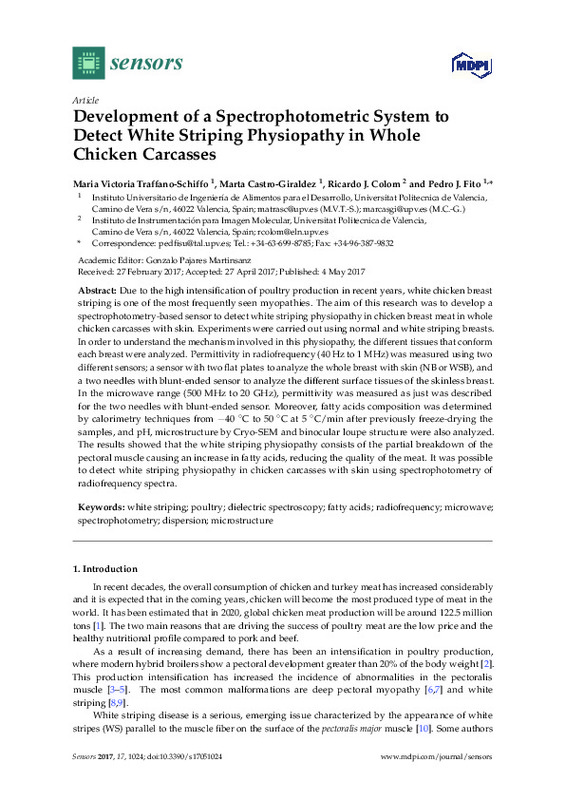JavaScript is disabled for your browser. Some features of this site may not work without it.
Buscar en RiuNet
Listar
Mi cuenta
Estadísticas
Ayuda RiuNet
Admin. UPV
Development of a Spectrophotometric System to Detect White Striping Physiopathy in Whole Chicken Carcasses
Mostrar el registro completo del ítem
Traffano-Schiffo, MV.; Castro Giráldez, M.; Colom Palero, RJ.; Fito Suñer, PJ. (2017). Development of a Spectrophotometric System to Detect White Striping Physiopathy in Whole Chicken Carcasses. Sensors. 17(5):1024-1037. https://doi.org/10.3390/s17051024
Por favor, use este identificador para citar o enlazar este ítem: http://hdl.handle.net/10251/97783
Ficheros en el ítem
Metadatos del ítem
| Título: | Development of a Spectrophotometric System to Detect White Striping Physiopathy in Whole Chicken Carcasses | |
| Autor: | Traffano-Schiffo, Maria Victoria | |
| Entidad UPV: |
|
|
| Fecha difusión: |
|
|
| Resumen: |
[EN] Due to the high intensification of poultry production in recent years, white chicken breast striping is one of the most frequently seen myopathies. The aim of this research was to develop a spectrophotometry-based ...[+]
|
|
| Palabras clave: |
|
|
| Derechos de uso: | Reconocimiento (by) | |
| Fuente: |
|
|
| DOI: |
|
|
| Editorial: |
|
|
| Versión del editor: | http://doi.org/10.3390/s17051024 | |
| Código del Proyecto: |
|
|
| Agradecimientos: |
The authors acknowledge the financial support from: the Spanish Ministerio de Economia, Industria y Competitividad, Programa Estatal de I+D+i orientada a los Retos de la Sociedad AGL2016-80643-R, Agencia Estatal de ...[+]
|
|
| Tipo: |
|









